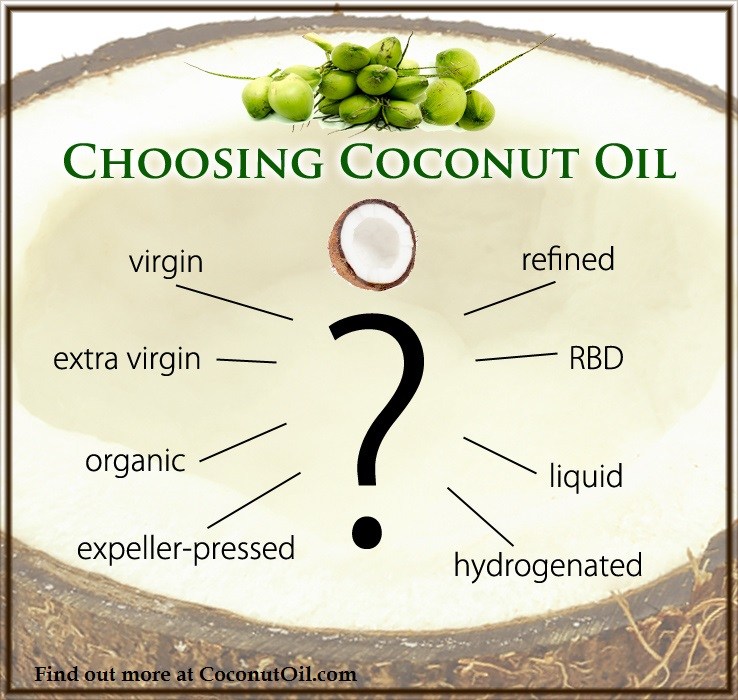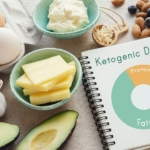
by Crystal Lauer
Health Impact News
Lauric acid, found predominately in coconut oil, may be a powerful tool in the prevention of infection and promote wound regeneration in severe burn patients, according to a recent study. Along with research that has previously shown the effectiveness of the use of lauric acid in combatting barrier-disrupting issues, the future for the use of saturated fatty acid in inhibiting infectious Gram-positive microbial bacteria and in skin barrier restoration is promising.
A mere thirty years ago patients who had sustained burns over 50% of their body were given little to no hope of survival, a history which stands in stark contrast to the current status where people who have sustained burns covering even ninety percent of their bodies are now capable of recovery, albeit often with serious disabilities.
The increase in survival rates is directly related to the advances made in specialized burn care by the medical community, with better fluid resuscitation, nutritional support, pulmonary care, wound care and infection control playing critical roles.
Still, in patients whose burns cover over 40% of the entire body, approximately seventy-five percent of deaths are largely attributable to sepsis from infected wounds or complications derived from infection.
Because the damaged tissue, which in its healthy state would act as a protective barrier, is seriously compromised in burn victims, topical antibiotics are necessary in keeping the moist wounds from becoming hotbeds of infection. The increase in antibiotic-resistant bacteria strains is creating a necessity for researchers to identify substances that are both antibacterial and regenerative.
Lauric acid, with its anti-viral and anti-microbial properties, is one such substance that researchers are hopeful may fit the above criteria perfectly.
A healthy unbroken skin surface is imperative for keeping the body’s fluid and temperature levels optimal, as well as being an essential agent for immune health and vitamin D absorption. While medical professionals fight to keep the fluids and thermoregulation supported during surface tissue regeneration, opportunistic bacteria are eager to take advantage of the patient’s vulnerable state and can wreak havoc in the recovery process. These colonizing bacteria use the damaged tissue as nourishment and compromise the recovery of the individual.
Multi-drug resistant bacterial pathogens are identified as the most common culprits of hospital-acquired infection and are a tremendous threat to 2nd and 3rd degree burn patients.
In a recent pilot study, researchers used lauric acid at varying ratios and in combination with five different ointment bases to determine the effectiveness of lauric acid in protecting burn victims against colonizing-bacteria such as Staphylococcus Aureus. The bases, which included Anhydrous Eucerin DAB, Anhydrous Eucerin II, Hydrophilic Vaseline, White Vaseline, and Lekobaza, were combined with the lauric acid and applied to samples of tissue retrieved during surgical procedures performed on burn patients.
The samples, after being collected, were treated with the lauric acid preparations and exposed to strains of Pseudomonas aeruginosa, S. Aureus and Escherichia coli.
The results showed a greater degree of inhibition in microbial growth with higher ratios of lauric acid, with the only exception being white Vaseline. In the case of Gram-positive Staphylococcus aureus, lauric acid showed the greatest inhibition of microbial growth and with Pseudomonas aeruginosa inhibition of microbial growth was only observed with the use of pure lauric acid.
Researchers determined that the aseptic and regenerative properties inherent to lauric acid made it a promising adjunct in the treatment of severely damaged tissue as with burn victims, but lauric acid also has a long history of being beneficial to all forms of dermal disruption.
Lauric acid is a saturated medium-chain fatty acid which is found in the fats and oils of both animals and plants. It’s most widely recognized for being the primary lipid in coconuts and palm kernels, though it is also found in milk. When it comes to milks, human breast milk has the highest concentration of lauric acid, but cow’s milk and goat’s milk also contain the health-promoting saturated fatty acid in beneficial ratios.
In the medical field, lauric acid is sometimes extracted from coconuts and combined with glycerin to create a chemical known as monolaurin. Monolaurin is being studied for its benefits in medicine, as well as food preservation and sanitation. With the rise of super bugs, which are turning once well-controlled illnesses into fatal conditions, researchers and scientists are hopeful that monolaurin can be used to combat antibiotic-resistant infections.
When coconut oil, palm kernel oil, or mammal milk are ingested, the lauric acid in the food will be converted by the body into monoglyceride monolaurin, which researchers suggest can inhibit opportunistic pathogens that cause infection.
How this transformation occurs in the body or in what amounts, is still not clearly understood by science. Because lauric acid is irritating on its own and never found in nature alone, it is best used or consumed in coconut oils, palm kernel oil or through drinking minimally processed grass-fed cow or goat milks, to take advantage of the internal health benefits.
Lauric acid, which makes up between 40% and 55% of coconut oil, is easily and quickly metabolized, and the majority is sent to the liver where it immediately is used to produce energy along with ketone bodies, which can be used by the heart and brain as readily available sources of energy.
Studies show that despite being a saturated fat, lauric acid’s contribution to fat storage is negligible, which also makes it a great addition to a healthful diet in which weight loss is the desired goal.
For external use, research has shown that virgin coconut oil (VCO) has the ability to greatly improve the skin’s hydration and elasticity levels, which is due in part to the lauric acid in combination with the other components which are inherent to coconut oil. Even adding some virgin coconut oil to your existing lotions or creams can improve the condition and health of chronically dry skin.
In previous studies it was hypothesized that due to the bactericidal properties of lauric acid, it could be beneficial in the treatment of acne. Researchers noted that the follicular inflammatory, Propionibacterium acnes (P. acnes), Staphylococcus aureus and Staphylococcus epidermidis, showed significant sensitivity to lauric acid without any cytotoxicity of the sebocytes.
In other words, once again lauric acid demonstrated significant healing properties when applied topically, without danger of toxicity to the individual, and it did it fifteen times better than benzoyl peroxide (an ingredient used to treat acne).
An in vitro study published in the Annals of Clinical and Laboratory Research isolated organisms such as Escherichia coli, Staphylococcus aureus, Mycobacterium tuberculosis, Streptococcus pneumonia and Salmonella spp., and exposed them to lauric acid which had been esterified from coconut oil.
Esterification is a process through which the acids are converted to an ester by combining with an alcohol and removing the water molecules. In the case of this study, lauric acid is separated from the coconut oil through freezing. Since lauric acid freezes at 47 degrees Celsius and coconut oil freezes at 25.1 degrees Celsius, the coconut oil can be frozen until solid and then removed leaving the unfrozen lauric acid beneath to be used in its pure form in the research.
The study measured the inhibition of these microbial isolates when exposed to lauric acid solutions in varying concentrations. The results showed a significant antibacterial effect on Gram-positive bacteria with a lesser influence on the Gram-negative bacteria. Researchers suggested
“…more studies be done to ascertain the mechanisms of actions of this acid on the bacterial cell including the noncellular (viruses) strains.”
In each of the above studies a trend towards higher concentrations of lauric acid being most effective in killing bacteria both in Gram-positive and in Gram-negative was observed.
With our skin being our largest organ and our first line of defense against microbial pathogens, it’s hardly arguable that the health of skin is an important factor in our continued overall health.
The good news in the fight against antibiotic-resistant infections may just be wrapped up in a coconut husk. With research digging deeper into the natural world to find answers for arguably man-made issues, the good news may also simply be that there are answers to be found.
In the case of severe burn patients, whose fight against colonizing bacteria is waged with every tool currently available, the research into lauric acid’s amazing antibacterial and regenerative properties may be just the weapon needed to decrease morbidity and significantly improve the odds of survival.
For those who suffer from disruption of the barrier function of their skin, which in turn has led to health problems exacerbated by prolonged inflammation, microbial colonization, fungal growth etc., the use of lauric acid in the form of coconut oil, either alone or in conjunction with commercial moisturizers, can often bring about better hydration, killing of microbial pathogens and a reduction in the damaging inflammation.
There is still much work to be done if we want to better understand the various possible uses and mechanisms of lauric acid in the treatment of burns and even skin disruptions, but scientists see the exciting potential for many future life-saving applications.
References
Abbas Abel Anzaku, Josiah Ishaku Akyala, Juliet Adeola, and Chinwe Ewenighi. “Antibacterial Activity of Lauric Acid on Some Selected Clinical Isolates,” January 2017. https://doi.org/10.21767/2386-5180.1000170.
Azila Aziz (last), Mohamad roji Sarmidi, R. A. Aziz, and Norhayati mohamed noor. “The Effect of Virgin Coconut Oil Loaded Solid Lipid Particles (VCO-SLPs) on Skin Hydration and Skin Elasticity.” Jurnal Teknolog 62, no. 1 (April 2013): 39–43.
Bobiński R, Wyszomirski M, Machnickam A, Pielesz A, Kawecki M, Waksmańska W, and Staniszewski L. “The Effect of Lauric Acid on Pathogens Colonizing the Burn Wound: A Pilot Study.” Altern Ther Health Med., n.d. https://www.ncbi.nlm.nih.gov/pubmed/31634869.
Church, Deirdre, Sameer Elsayed, Owen Reid, Brent Winston, and Robert Lindsay. “Burn Wound Infections.” Clin Microbiol Rev. 19, no. 2 (April 2006): 403–34. https://doi.org/10.1128/CMR.19.2.403-434.2006.
“Lauric Acid.” U.S. National Library of Medicine, n.d. https://pubchem.ncbi.nlm.nih.gov/compound/Lauric-acid.
Nakatsuji, Teruaki, Mandy C. Kao, Jia-You Fang, Christos C. Zouboulis, Liangfang Zhang, Richard L. Gallo, and Chun-Ming Huang. “Antimicrobial Property of Lauric Acid Against Propionibacterium Acnes: Its Therapeutic Potential for Inflammatory Acne Vulgaris.” J Invest Dermatol 129, no. 10 (October 2009): 2480–88. https://doi.org/10.1038/jid.2009.93.





 How the Simple High-Fat Low-Carb Ketogenic Diet Continues to Change People's Lives
How the Simple High-Fat Low-Carb Ketogenic Diet Continues to Change People's Lives New Studies Continue to Show that Coconut Oil is the Best Oil for Treating Skin Conditions and Maintaining Healthy Skin and Teeth
New Studies Continue to Show that Coconut Oil is the Best Oil for Treating Skin Conditions and Maintaining Healthy Skin and Teeth New Study Confirms Health Benefits of Coconut Oil and USDA False Claims Against It
New Study Confirms Health Benefits of Coconut Oil and USDA False Claims Against It The FDA has NOT Banned Trans Fats! Traditional Saturated Fats like Coconut Oil Continue to Shine for Alzheimer's Disease but are Condemned by U.S. Dietary Advice
The FDA has NOT Banned Trans Fats! Traditional Saturated Fats like Coconut Oil Continue to Shine for Alzheimer's Disease but are Condemned by U.S. Dietary Advice The Evidence of Coconut Oil's Superiority Over Drugs in Destroying Pathogens Continues to be Published in Peer-Reviewed Journals
The Evidence of Coconut Oil's Superiority Over Drugs in Destroying Pathogens Continues to be Published in Peer-Reviewed Journals
Leave a Reply